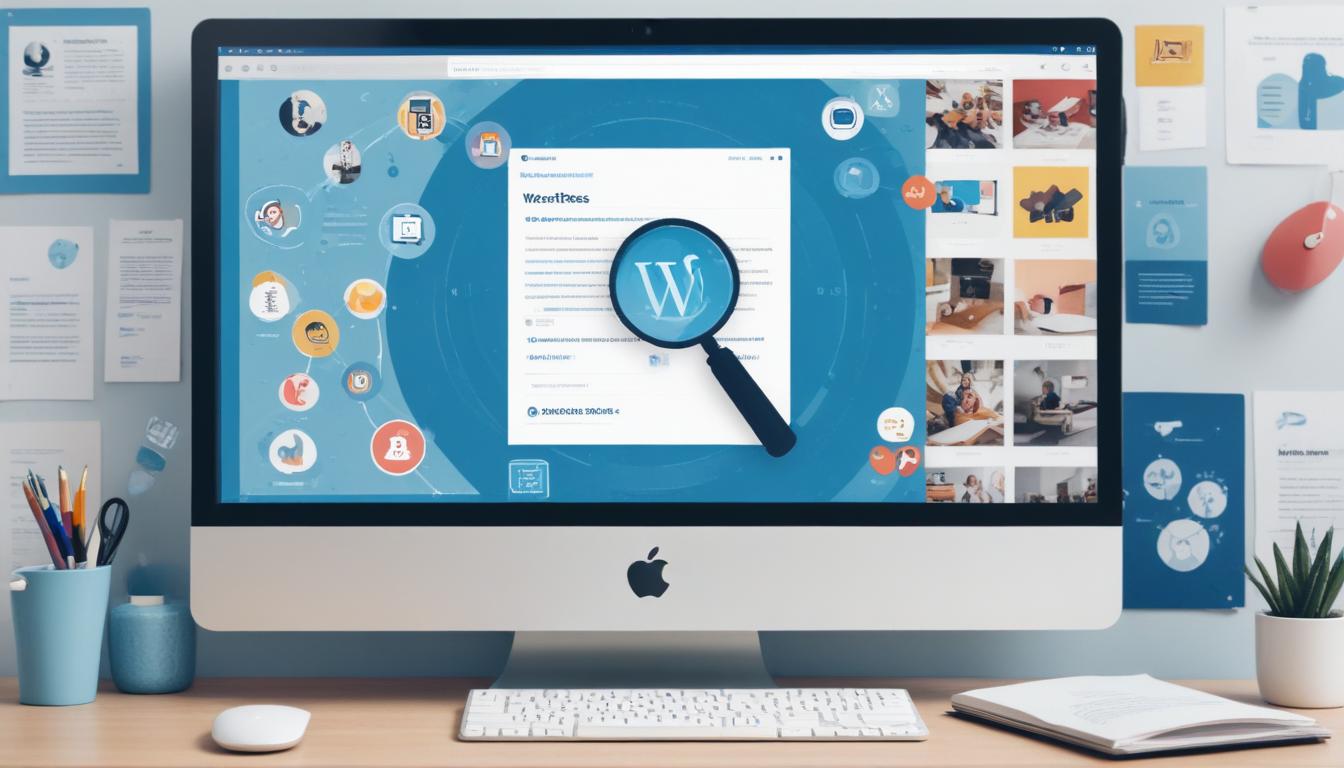
- Understanding web accessibility
- Conducting an accessibility audit
- Choosing accessible themes and plugins
- Optimizing multimedia content
- Testing and maintaining accessibility
In the digital age, ensuring your WordPress site is accessible is essential for reaching a wider audience, including individuals with disabilities. Understanding web accessibility is the foundational step in creating a site that is not only user-friendly but also compliant with legal standards such as the ADA (Americans with Disabilities Act). The concept of WordPress accessibility involves designing and developing web content that all users, regardless of their abilities, can perceive, understand, navigate, and interact with. Accessibility is a crucial facet of inclusive design.
The principles of web accessibility encompass various aspects. These include providing text alternatives for non-text content, ensuring that all functionality is available via keyboard interfaces, and offering clear content structure for screen readers. It is about creating an environment where visual, auditory, cognitive, and motor impairments are considered and addressed.
For WordPress users, achieving accessibility might seem daunting at first, but with the right resources and guidance, it’s completely attainable. There are a variety of tools and guidelines, like the WCAG (Web Content Accessibility Guidelines), that provide comprehensive checkpoints to assist in making your website more accessible to everyone.
Incorporating accessibility into your WordPress site not only improves user experience but also enhances your site’s SEO, reaching a broader audience. With tools available on platforms such as WorldPressIT.com, you can access a vast array of over 8,000 premium plugins and themes. These resources can help ensure your site is accessible, often available at super affordable prices due to special GPL licensing.
Taking the time to understand and apply web accessibility principles is worth the investment. It not only serves the needs of those with disabilities but also enhances the overall effectiveness and usability of your WordPress site. Whether you’re a beginner or an advanced user, focusing on accessibility can significantly enrich the quality and reach of your online presence.
Conducting an accessibility audit
Embarking on an accessibility audit of your WordPress site is a pivotal step in achieving a truly inclusive design. This process involves a detailed evaluation of your website to ensure compliance with ADA standards and the Web Content Accessibility Guidelines (WCAG). By systematically checking for potential barriers, you enable all users, including those with disabilities, to access your content seamlessly.
An effective audit begins with a thorough assessment of your site’s existing elements. Key areas to review include navigation structure, keyboard accessibility, and compatibility with screen readers. Using automated tools such as WAVE or Axe can efficiently identify basic accessibility issues. However, complementing these tools with manual testing—where you simulate user experiences with disabilities—ensures a comprehensive evaluation.
Essential aspects to scrutinize include ensuring that all images have descriptive alt tags, confirming that your site can be navigated solely with the keyboard, and providing captions or transcripts for video content. Adjusting contrast ratios to enhance text readability for users with visual impairments is also crucial. Each adjustment enhances WordPress accessibility, contributing to a more welcoming user experience.
A detailed audit serves multiple purposes. It not only assures ADA compliance but also boosts your site’s SEO and user engagement. By improving navigability and interaction, you broaden your reach, making your content accessible to a more diverse audience. Furthermore, platforms like WorldPressIT.com offer discounted access to thousands of premium plugins and themes. These resources can be pivotal in facilitating your site’s accessibility enhancements through their special GPL licensing model.
Regularly scheduled audits should become an integral part of your WordPress management routine. With both automated and manual approaches, continuous testing ensures your site remains accessible in the face of new content additions or updates. By dedicating time and resources to accessibility audits, you uphold an inclusive design ethos and contribute significantly to a more accessible web.
Choosing accessible themes and plugins
Selecting the right themes and plugins is fundamental when striving for a WordPress site that’s welcoming to all users. An accessible theme is designed to follow best practices that ensure everyone, including individuals with disabilities, can use your site effectively. When evaluating themes, look for those built with accessibility in mind, often marked with a specific tag or description indicating compliance with WCAG standards.
Key features of accessible themes include proper use of HTML tags and landmarks that enhance navigation via screen readers, high contrast for readability, and keyboard accessibility which allows all interactive elements to be reached using keyboard shortcuts. Plugins can also bolster WordPress accessibility, providing additional functions like alternative text for images, video transcripts, and form enhancements for broader usability.
However, even the best themes and plugins can have drawbacks. Some complex designs may inadvertently overlook accessibility needs or introduce performance lags. Regular updates and community support are vital features to consider, ensuring that the theme or plugin remains adaptive to new accessibility standards and updates.
To get started, the installation is straightforward and parallels the usual WordPress procedure. Simply go to the WordPress dashboard, locate the ‘Themes’ or ‘Plugins’ section, and search using terms like ‘accessible’ or specific needs you’re aiming to address. Once found, click ‘Install’ and then ‘Activate’ to make them live on your site.
Use cases for these accessible tools are varied. Educational websites can ensure all learners access content without barriers, while e-commerce sites can enhance their checkout processes to accommodate all users. Blogs and informational sites benefit by broadening their readership through inclusive design elements.
Recent enhancements in the WordPress community highlight a growing emphasis on accessibility, driven by new plugin features and tools that streamline compliance with the ADA and WCAG updates. This ongoing development helps ensure that accessible design remains a priority for WordPress users.
Platforms like WorldPressIT.com are invaluable, offering affordable access to over 8,000 premium plugins and themes under advantageous GPL licensing agreements. These resources empower you to select from the best tools available, ensuring comprehensive accessibility improvements, without the burden of excessive costs.
Optimizing multimedia content

Optimizing multimedia content on your WordPress site is an essential step in ensuring WordPress accessibility and enhancing the overall user experience. Multimedia elements, including images, videos, and audio files, should be accessible to all users, including those with disabilities. This requires a thoughtful approach to design and implementation, ensuring that content is perceivable, operable, and understandable by a diverse audience.
Start by providing alt text for all images. Alt text is a brief description that conveys the meaning or content of an image to users who are visually impaired or using screen readers. This small addition can significantly improve usability. For videos, offering both captions and transcripts is crucial for those who are deaf or hard of hearing. Captions should be synchronized with the audio to ensure the content is easily accessible, while transcripts provide a complete text version of the spoken content and any relevant audio cues.
Audio content should also be accompanied by text alternatives. Providing descriptions of audio elements and ensuring that control interfaces are keyboard accessible can make a huge difference in allowing all users to enjoy the content. It’s vital to ensure that video players can be operated without a mouse, appealing to users with motor disabilities.
To further enhance multimedia accessibility, consider the contrast and clarity of your visuals. High contrast between text and background colors ensures that content is easily readable, particularly for users with visual impairments. Moreover, providing scalable text options and allowing users to adjust the playback speed of audio and video content can significantly enhance the inclusive design of your site.
Optimizing multimedia content is not just a facilitator of ADA compliance but also enhances your site’s SEO, as search engines favor accessible and user-friendly content. Tools and plugins designed for WordPress can simplify the process of making multimedia content accessible. Platforms such as WorldPressIT.com offer affordable access to a plethora of premium plugins and themes, equipped with features to enhance accessibility, thanks to their unique GPL licensing.
By taking the time to optimize multimedia content, you contribute to creating a WordPress site that embodies inclusive design principles. This approach not only broadens your site’s reach but also aligns with the ethical responsibility of creating a web that is open to everyone. In doing so, you ensure that your content can be a resource and source of connection for users of all abilities.
Testing and maintaining accessibility
Testing and maintaining accessibility is an ongoing commitment that ensures your WordPress site remains inclusive and functional for all users. Regular testing is essential to detect new issues that might arise with content updates or plugin changes. By embedding consistent accessibility practices into your workflow, you sustain a site that aligns with ADA compliance and caters to users of varying abilities.
Start by employing both automated and manual testing methods. Tools like WAVE, Axe, and Lighthouse are excellent for highlighting underlying accessibility problems. They provide detailed reports on violations such as missing alt text, insufficient color contrast, and improper heading structures. While these tools are indispensable, manual testing is equally important, as it allows you to experience the site as users with disabilities would. Simulate interactions using only a keyboard or with screen readers to identify navigation barriers that automated tools might overlook.
Maintenance often involves routine quality checks as you add or alter content and plugins. Each update is an opportunity to revisit your accessibility standards, ensuring new content complies with the Web Content Accessibility Guidelines (WCAG). Keeping a checklist of essential accessibility tasks and referencing it during each update can significantly reduce the chances of inadvertently introducing accessibility barriers.
It’s also beneficial to stay informed about changes in accessibility standards and technological advancements. Subscribing to updates from accessibility experts or related forums can provide valuable insights and latest practices. Engagement with the community through workshops or webinars can further enhance your knowledge and commitment to maintaining an accessible site.
Emphasizing testing and maintenance exhibits a commitment to inclusive design, which not only broadens your site’s user base but also upholds ethical standards of digital accessibility. Furthermore, WorldPressIT.com provides an unparalleled advantage by offering access to its extensive collection of over 8,000 premium plugins and themes at affordable prices through GPL licensing. These resources are pivotal in facilitating the ongoing process of refining your site’s accessibility and ensuring it remains a welcoming space for all users.
Incorporating regular testing into your workflow fortifies your site’s infrastructure against accessibility issues over time. By prioritizing accessibility maintenance, you contribute to a more equitable web environment, ensuring your WordPress site is not only compliant but also a leader in delivering accessible content.






Leave a Reply